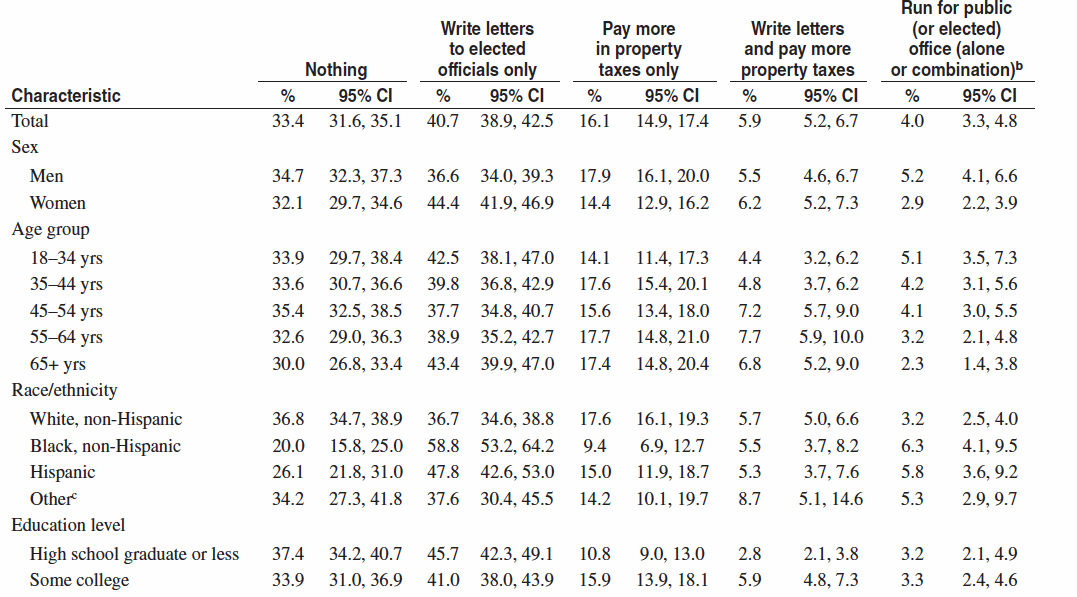CENTERS FOR DISEASE CONTROL AND PREVENTION
Background:
Street-scale urban design policies are recommended to increase physical activity in communities. Our purpose was to examine U.S. public support for local street-scale urban design features and policies.
Methods:
Analysis is based on a cross-sectional national sample of adults (n = 4682) participating in the 2006 HealthStyles mail survey.
Results:
About 57% of adults rated local street-scale urban design as highly important in determining the amount of physical activity they obtain. Adjusted odds of rating neighborhood features as having high importance were higher in people aged ≥65 years versus those <65 and minority racial/ethnic groups versus non-Hispanic whites. Two-thirds of adults were willing to take civic action to support local street-scale urban design policy. Adjusted odds of being willing to take any action versus none was higher in non-Hispanic blacks and Hispanics versus non-Hispanic whites, was higher in those with household incomes ≥$60,000 versus ≤$15,000 per year, and increased as education and perceived importance of neighborhood features increased.
Conclusions:
There are high levels of public support for local street-scale urban design policies; however, demographic differences exist in the level of support. These differences are important considerations for policymakers and for those designing community programs targeting street-scale urban design features and policies.
Download full version: Public Support for Street Scale Urban Disign Practices and Policies
About Centers for Disease Control and Prevention
www.cdc.gov
“CDC′s Mission is to collaborate to create the expertise, information, and tools that people and communities need to protect their health – through health promotion, prevention of disease, injury and disability, and preparedness for new health threats.”
Tags: CDC, Centers for Disease Control and Prevention, survey







 RSS Feed
RSS Feed